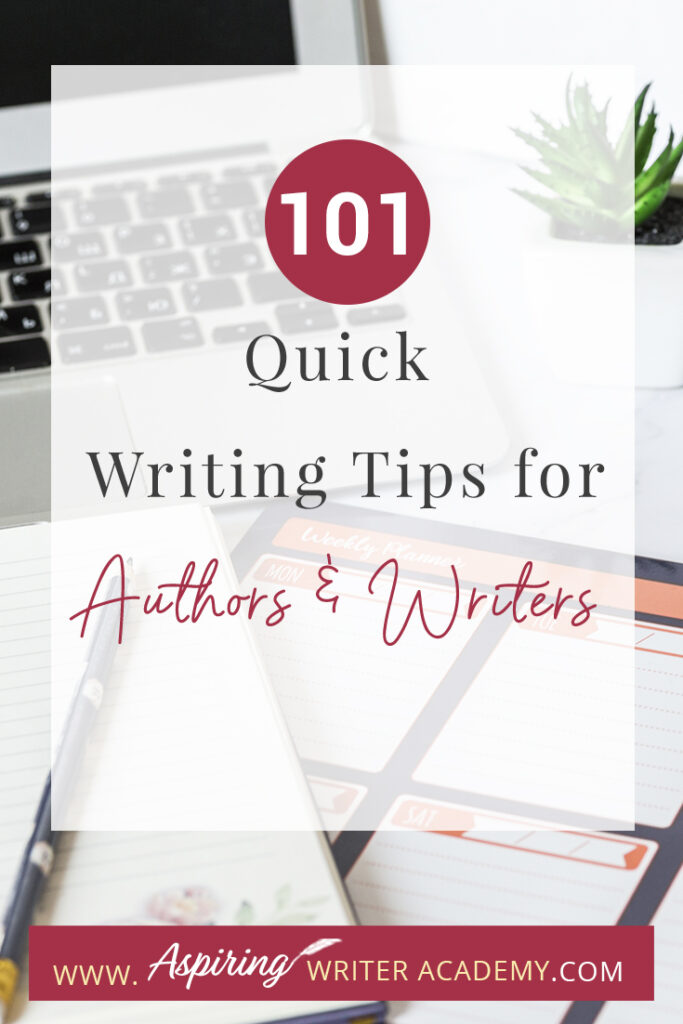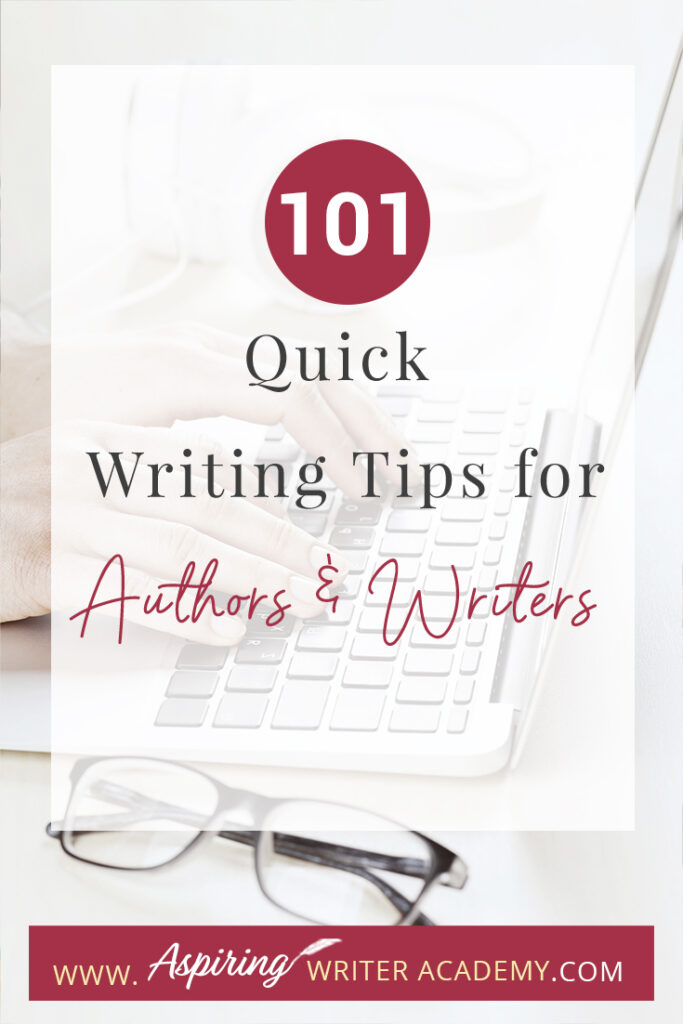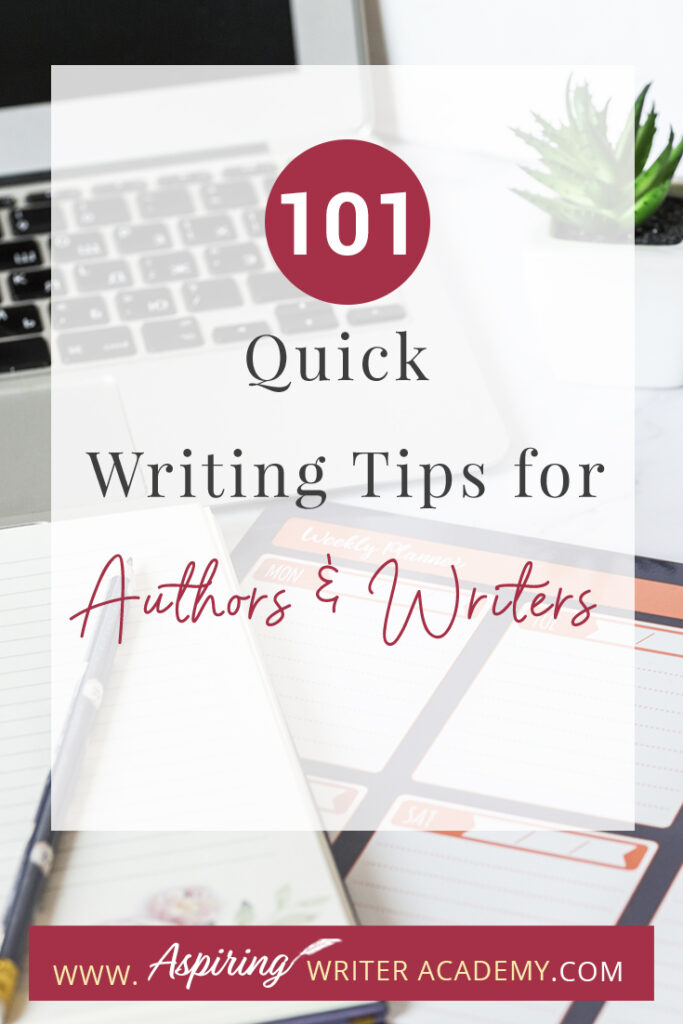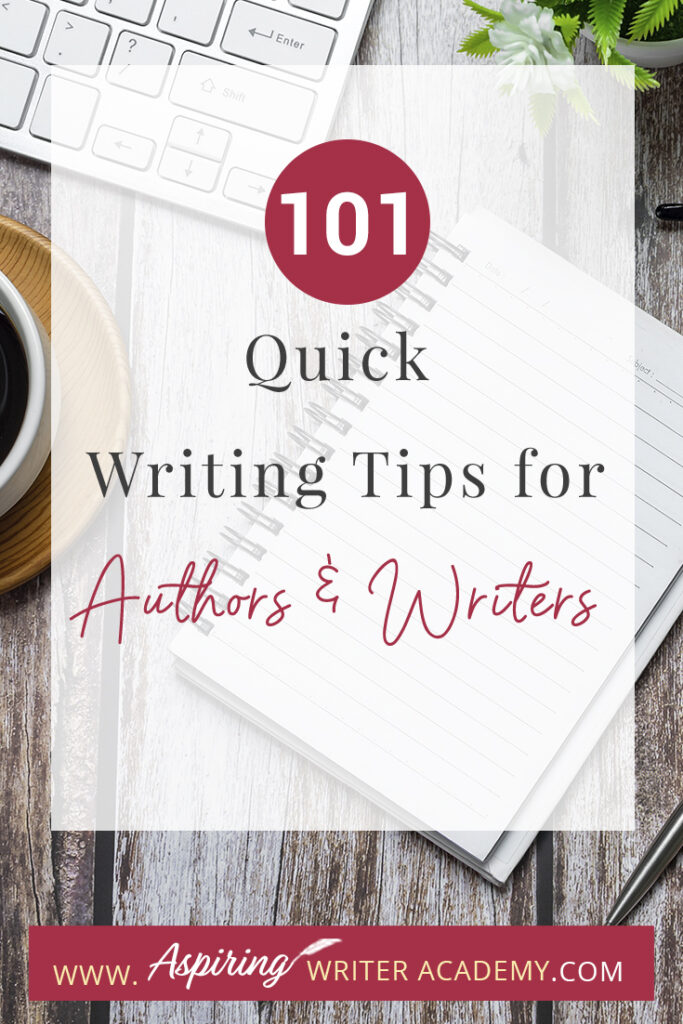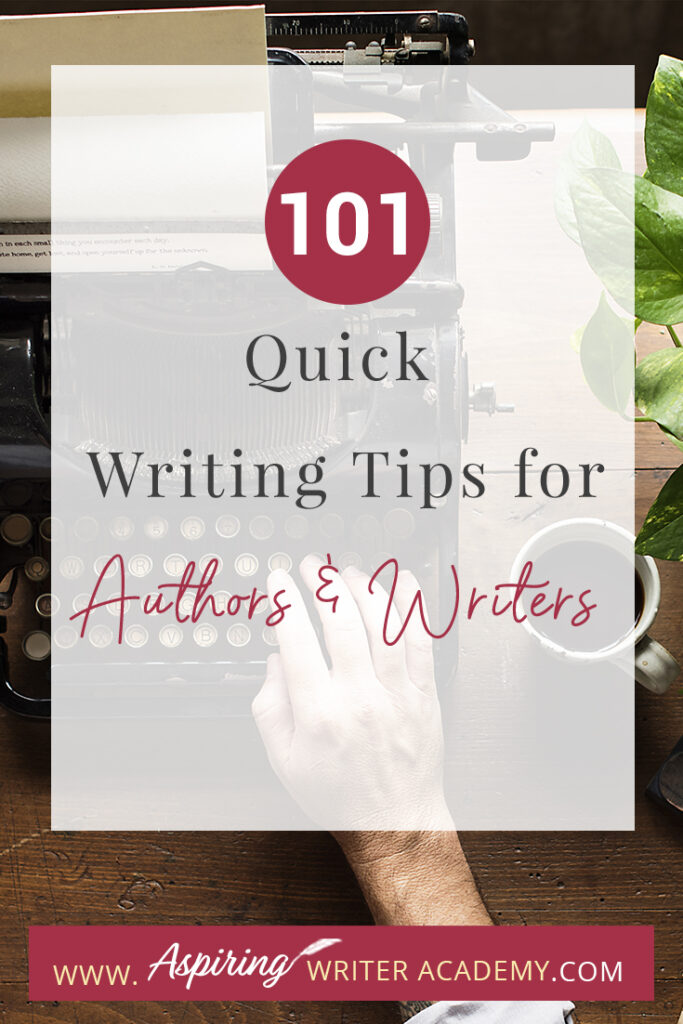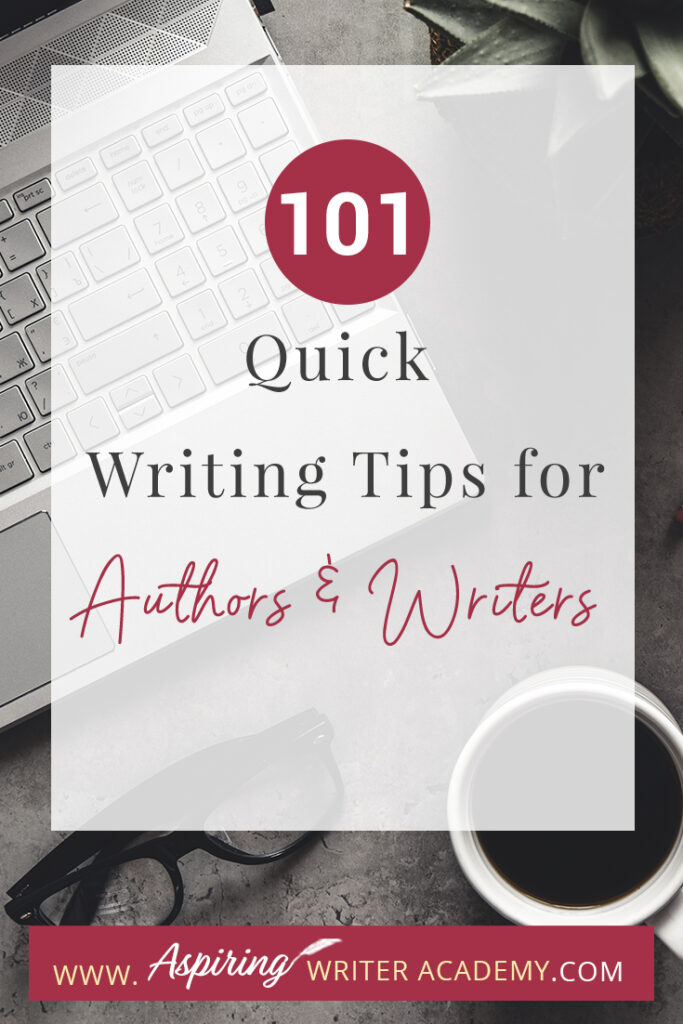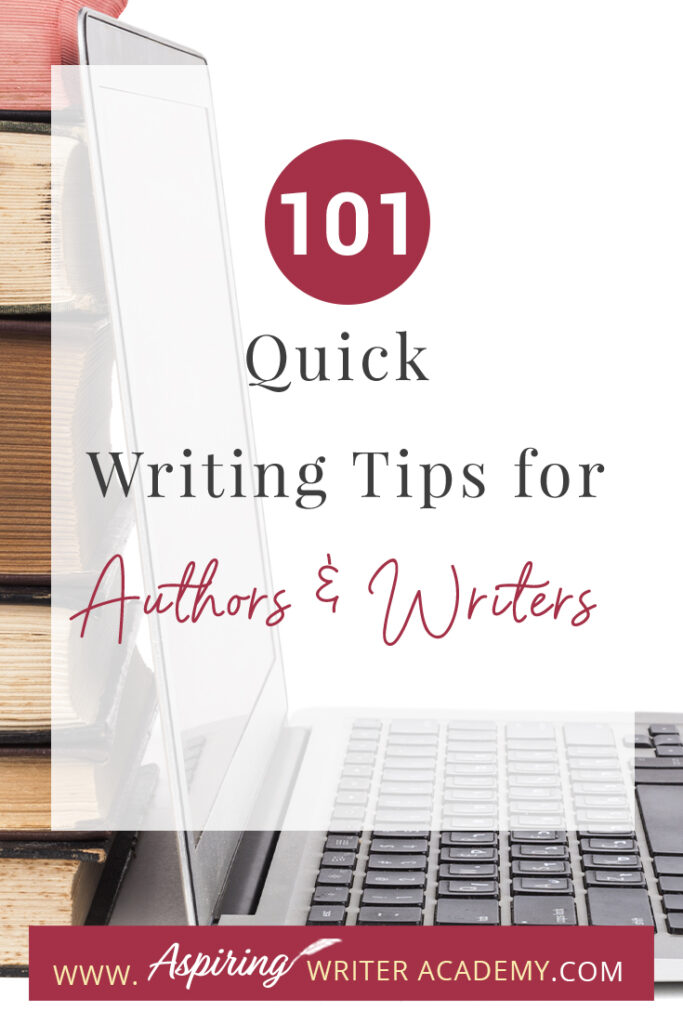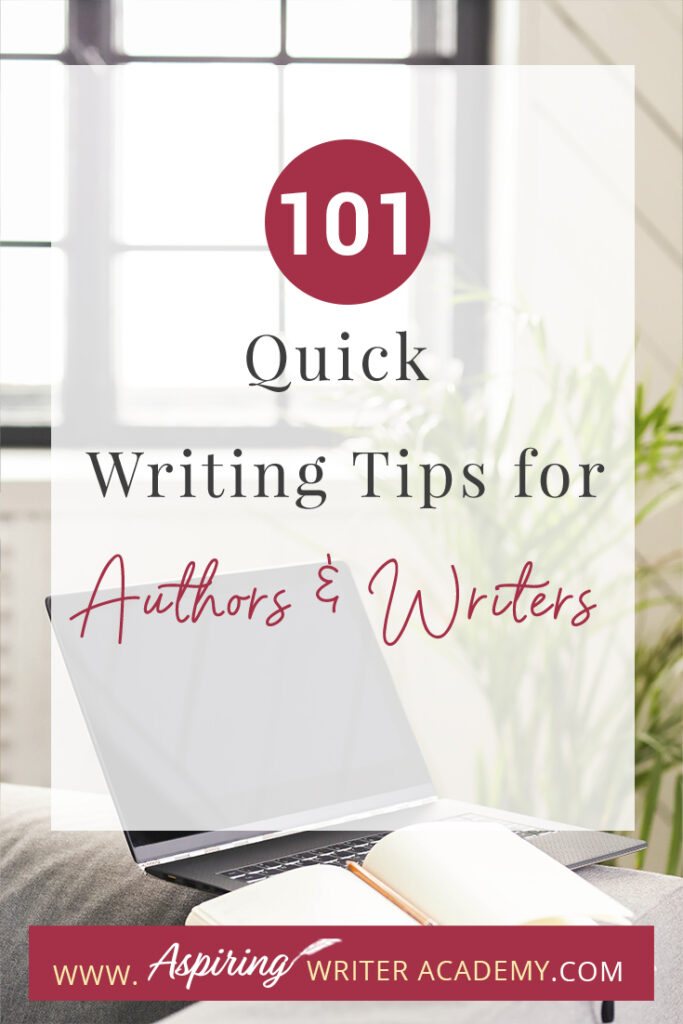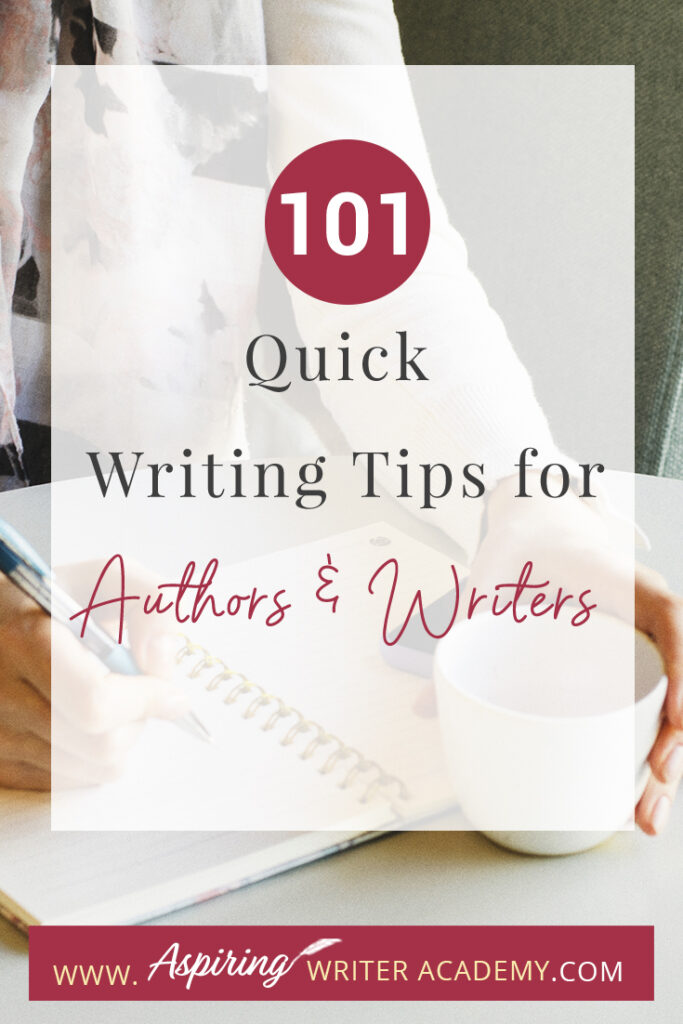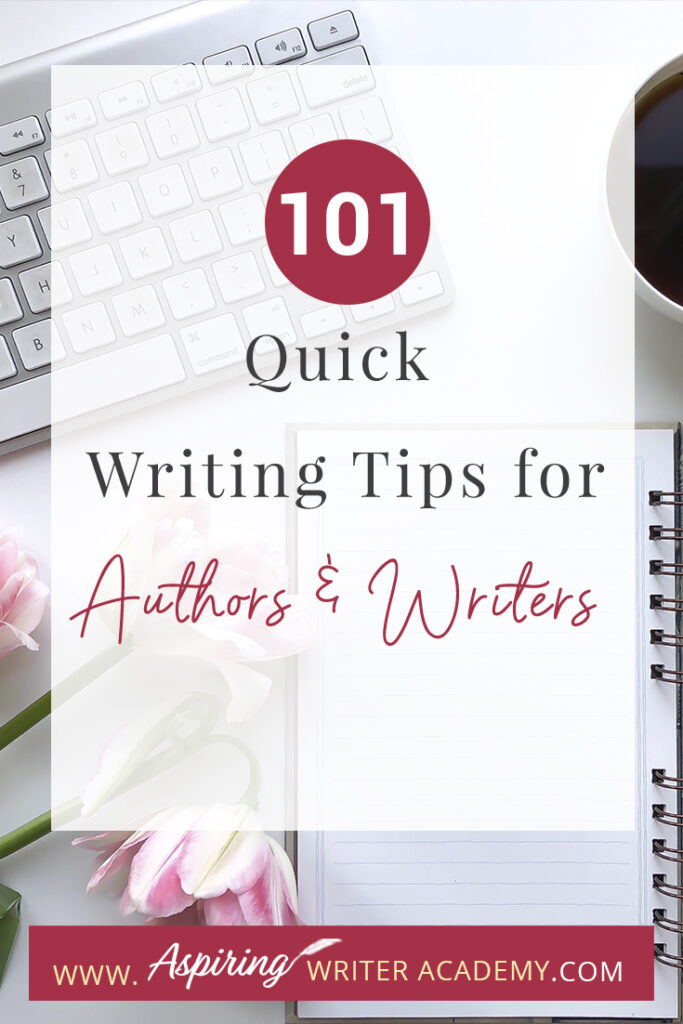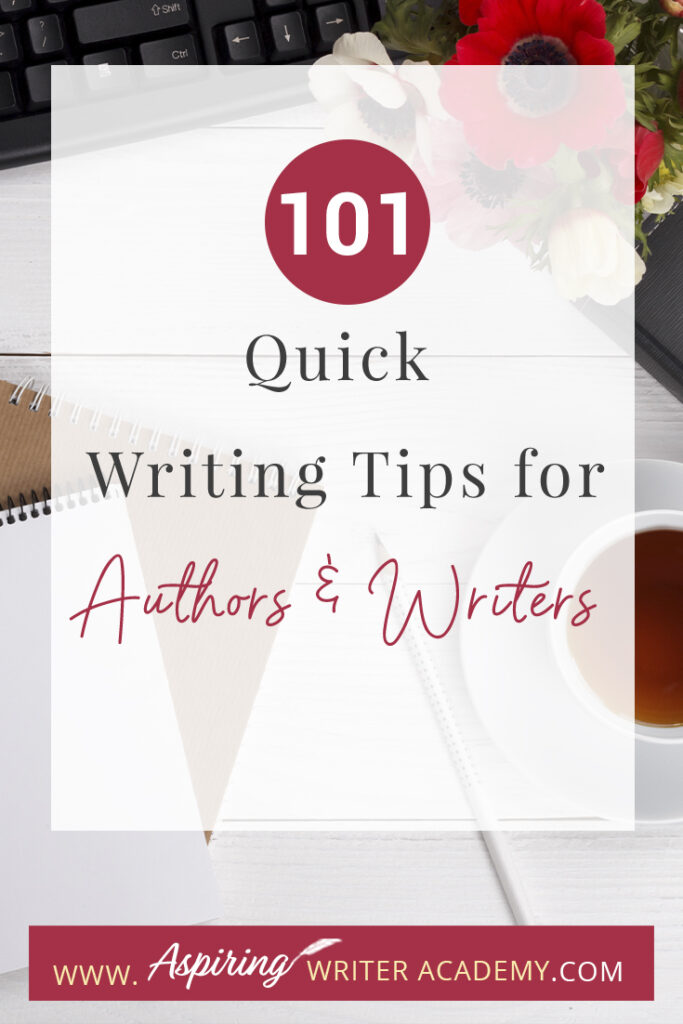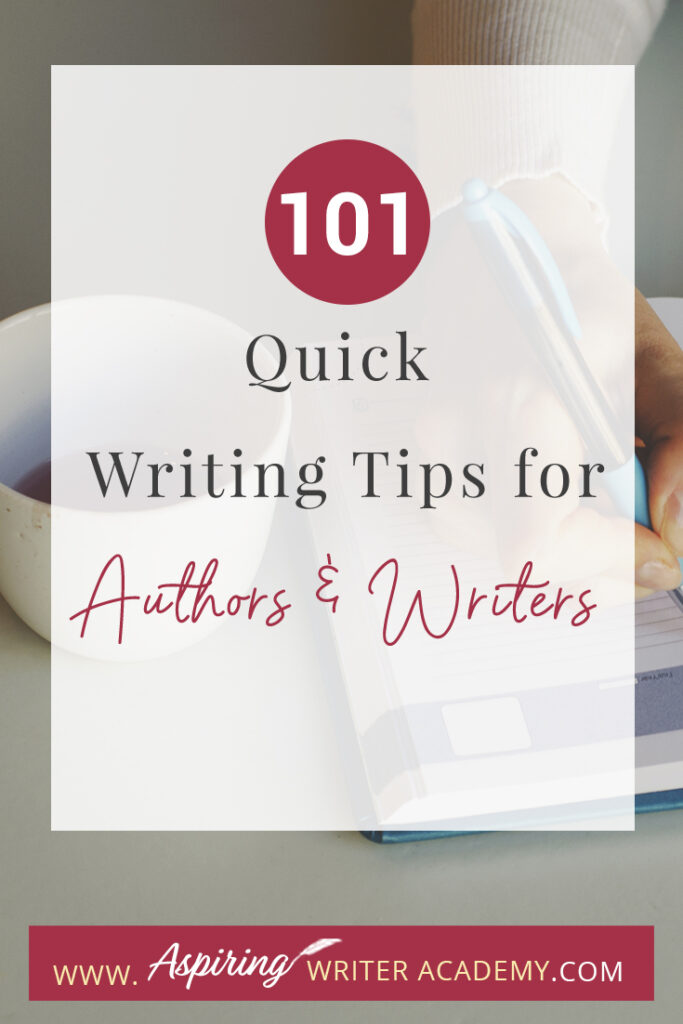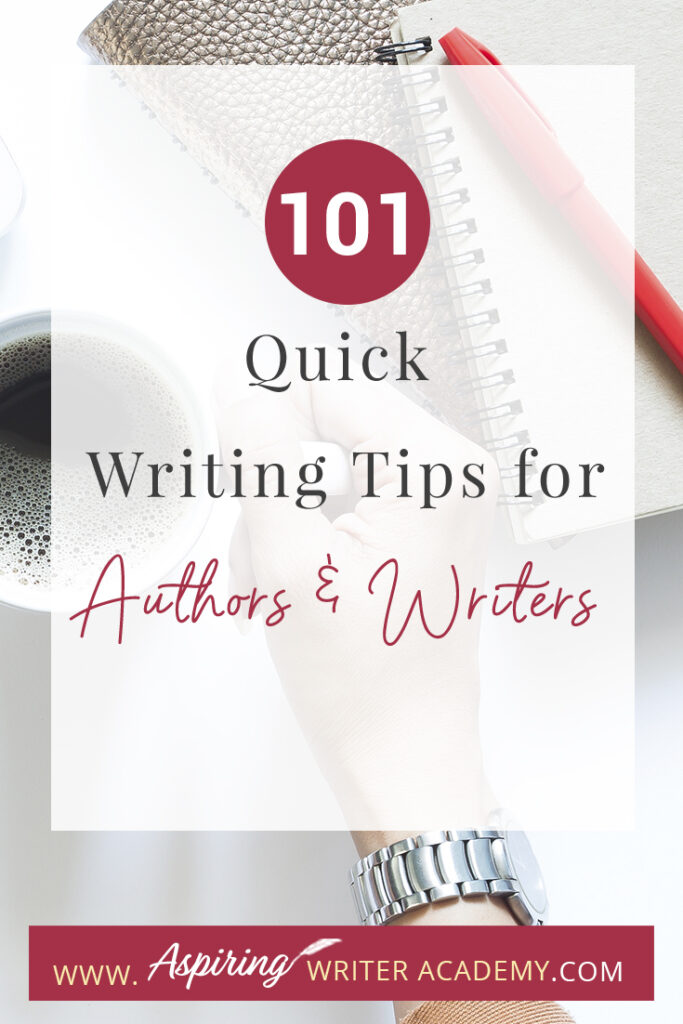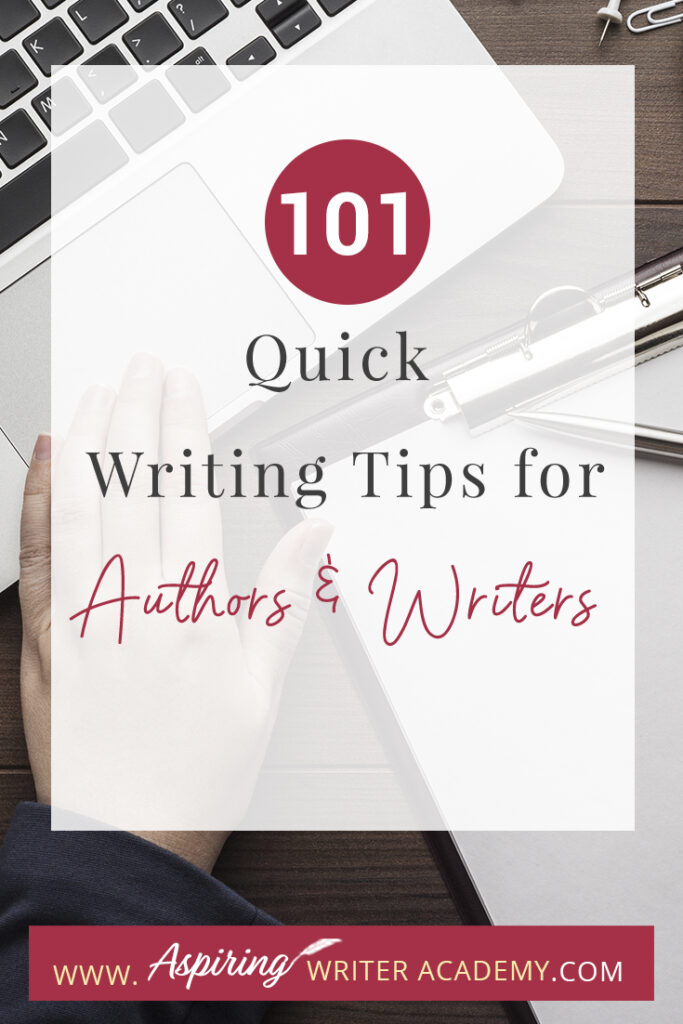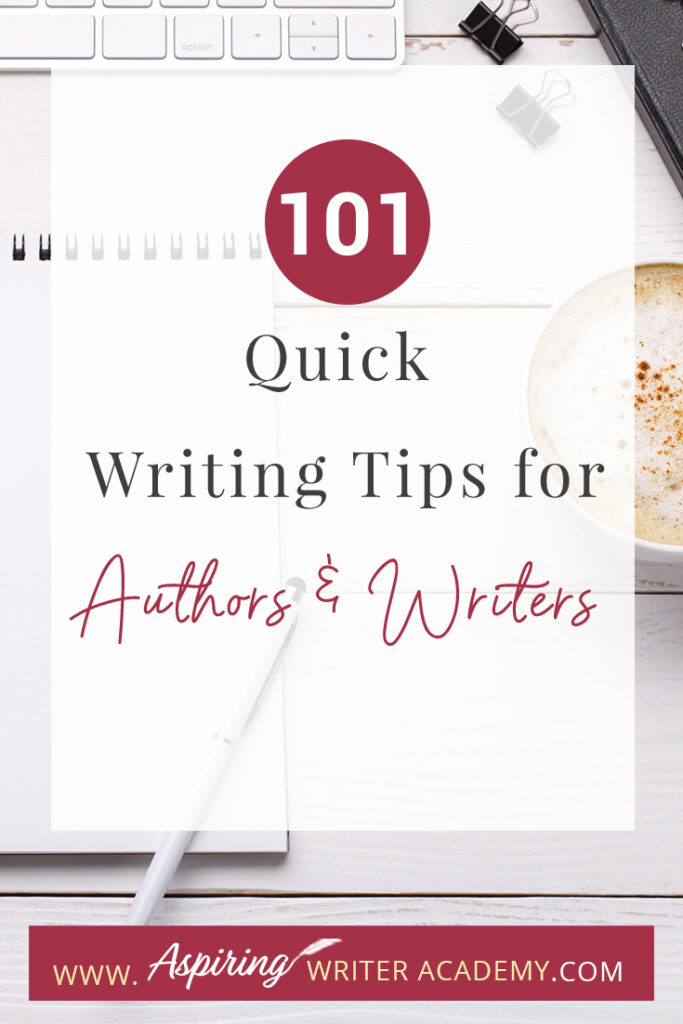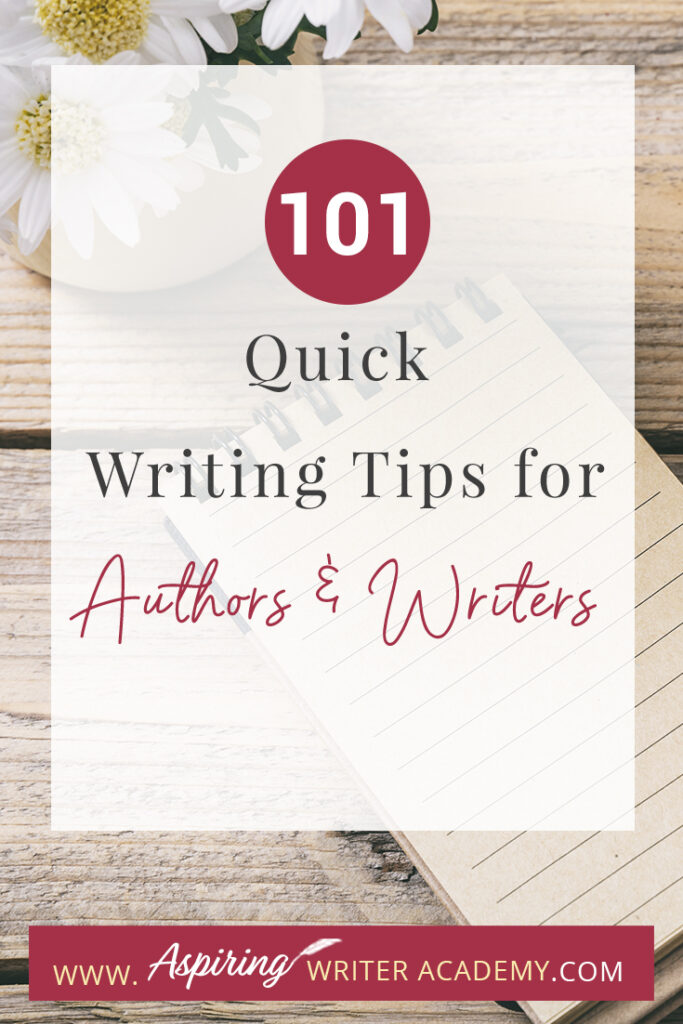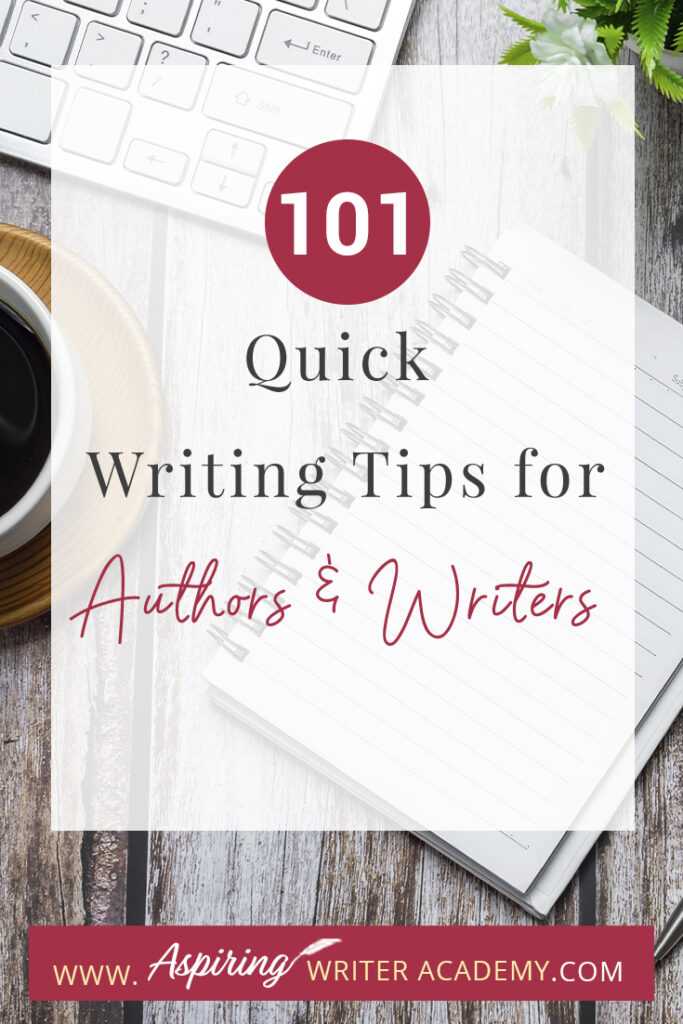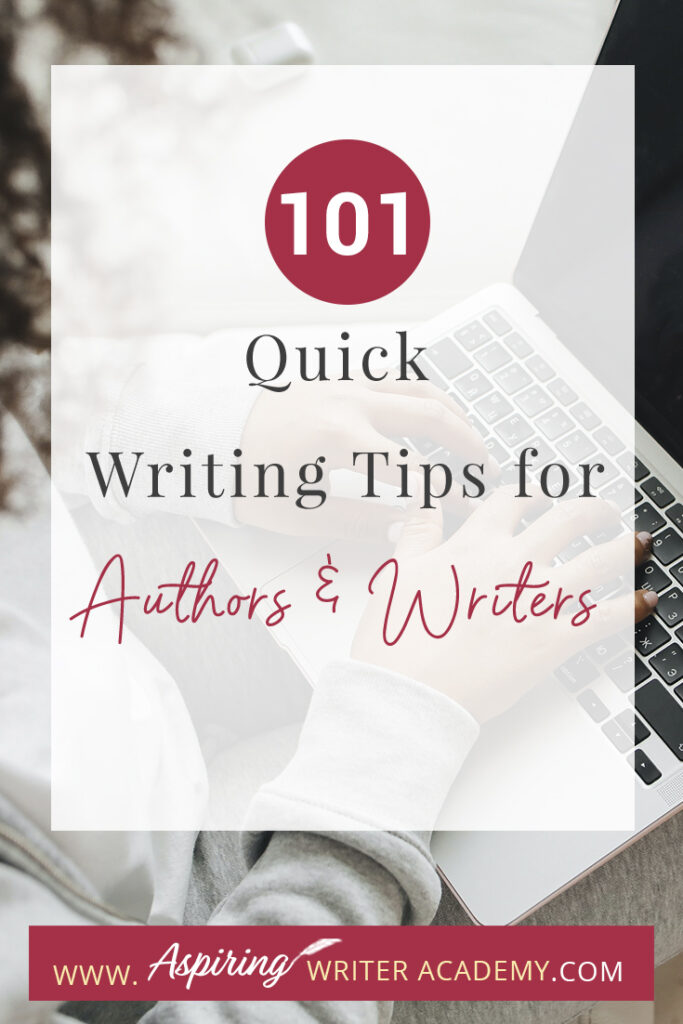101 Quick Writing Tips for Authors and Writers
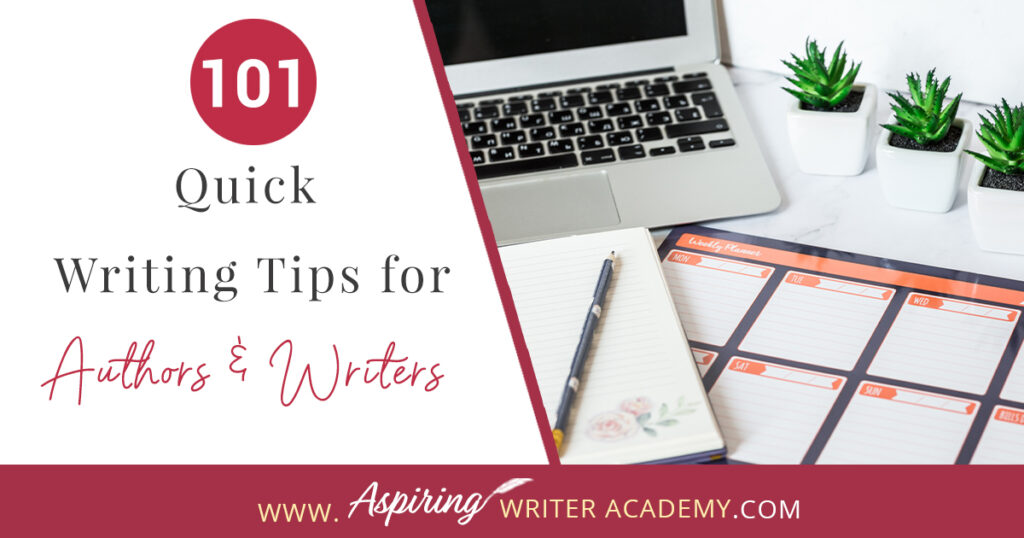
Writing can be a challenging and rewarding pursuit, but it's not always easy to know where to start or how to improve your craft. Whether you're a seasoned author or just starting out, we hope that you can take away something to help you out with your writing journey from our post 101 Quick Writing Tips for Authors and Writers. We hope that some of these tips help you hone your skills, overcome writer's block, and create compelling stories that captivate your readers.
Do you find it difficult to create compelling antagonists and villains for your stories? Do your villains feel cartoonish and unbelievable? Do they lack motivation or a specific game plan? Discover the secrets to crafting villains that will stick with your readers long after they finish your story, with our How to Create Antagonists & Villains Workbook.
This 32-page instructional workbook is packed with valuable fill-in-the-blank templates and practical advice to help you create memorable and effective antagonists and villains. Whether you're a seasoned writer or just starting out, this workbook will take your writing to the next level.
Our Goal for Aspiring Writer Academy is to help people learn how to write quality fiction, teach them to publish and promote their work, and to give them the necessary tools to pursue a writing career.
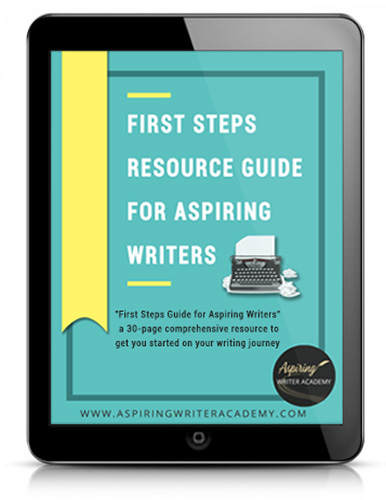
ENTER YOUR EMAIL
TO GET YOUR FREE
"First Steps Guide for Aspiring Writers" a 30-page comprehensive resource to get you started on your writing journey.
Other Blog Posts You May Like
How to Write a Novel While Working Full Time
How to Manipulate Pacing to Increase the Intensity of Your Scenes in a Fictional Novel
Learn to Plot Fiction Writing Series: Story Analysis of the Disney movie “Frozen”
Fiction Writing: The 3 Different Levels of Editing
Learn To Plot Fiction Writing Series: Story Analysis of the Movie “Top Gun: Maverick”
5 Reasons Your Writing Sucks! (And How to Fix It)
How to Brainstorm a New Novel Using Goal, Motivation, and Conflict
How to Write Query Letters (for Fiction)
Slingshot Week: How to Set New Goals for Writing in 2023
Novel Writing Tips: Don’t Bury the Dialogue!
How to Choose Characters to Populate Your Fictional Story
Fiction Writing: Critique Group Etiquette & Warning Signs of a Good Group Gone Bad
How to Prep for NaNoWriMo (National Novel Writing Month)
Fiction Writing: How to Plot a Story where the Antagonist is an ‘Invisible Foe’
Fiction Writing: How to Find a Critique Partner/Group
How to Research Information for a Historical Novel
7 Steps to Begin Writing a New Fictional Story
Learn to Plot Fiction Writing Series: Story Analysis of the movie “Signs”

